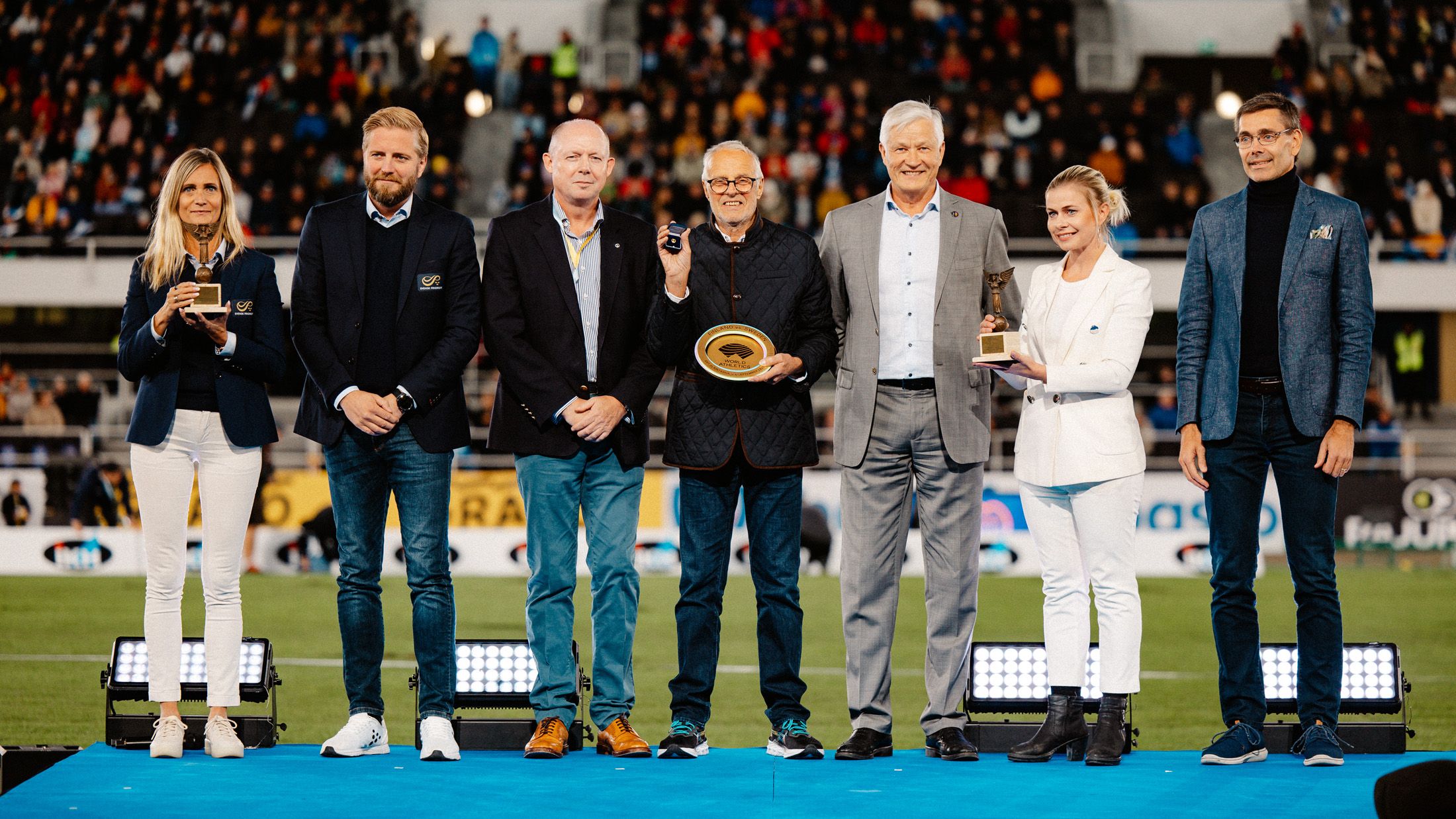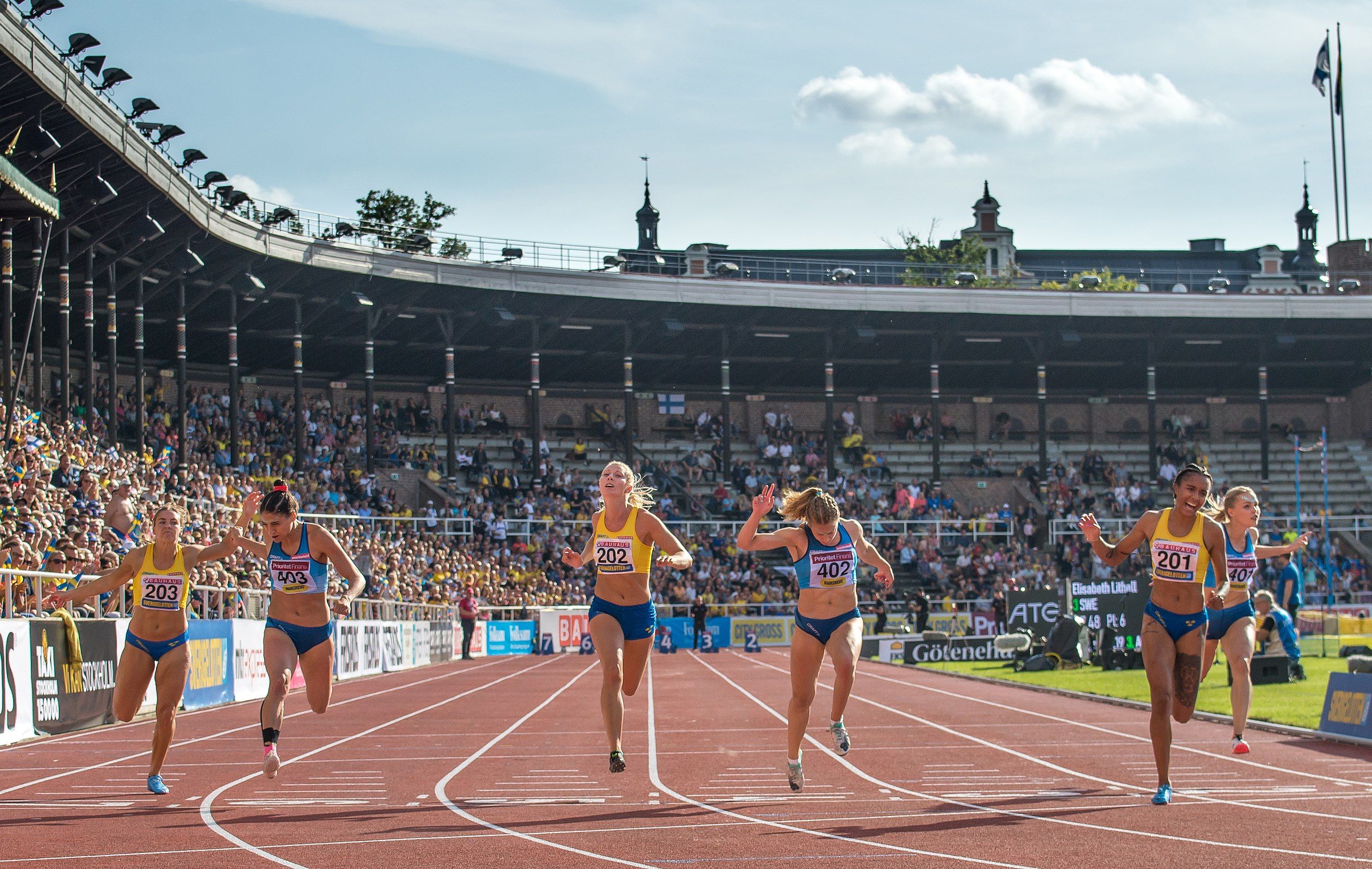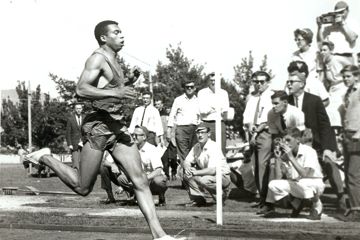Paavo Nurmi leads the 10,000m in the inaugural FIN vs SWE International in Eläintarha, Helsinki, in 1925 (© TAHTO)
This evening in Helsinki’s 1952 Olympic Stadium during the first of two days of competition at the Finland vs Sweden International Match, the history of this annual competition was recognised with the award of the World Athletics Heritage Plaque.
The competition – the last surviving, but notably still flourishing, dual-nation international track and field meeting in the world – was founded in Helsinki in 1925. The history of the match started not in the Olympic Stadium, which wasn't opened until 1938, but the nearby Eläintarha Sports Ground. Eläintarha is the home track of the local club Helsingin Kisa-Veikot and acts as the warm-up facility for the Olympic Stadium.
On 19 June 1924 at Eläintarha, Paavo Nurmi famously broke the 1500m and 5000m world records within less than an hour of each other. A little over a year later (5-6 September 1925) Nurmi was a member of the Finnish team that took on Sweden for the first time in what is now an annual fixture.
“The World Athletics Heritage Plaque announced today celebrates the unique history of the annual two-day Finland vs Sweden Match," said World Athletics President Sebastian Coe. "Born in 1925, this dual-nation international is a successful historic anomaly in a circuit of largely invitational meetings. I am delighted that the match between these two great athletics nations continues to thrive, attracting large and enthusiastic crowds, and similar broadcast audiences.”
At a ceremony in the Olympic Stadium, World Athletics Council Member Antti Pihlakoski, on behalf of Sebastian Coe, officially presented the World Athletics Heritage Plaque to the Finnish and Swedish athletics federations, respectively represented by Suomen Urheiluliitto Vice Presidents Riikka Pakarinen and Rami Urho and Svensk Friidrott Vice Presidents Caroline Gedin and Stephan Hammar. The plaque will now be placed on permanent display in Eläintarha.
The surprise guest was four-time Olympic champion Lasse Viren, who, on the 50th anniversary of his first Olympic 10,000m title, received a gold pin from World Athletics Heritage Director Chris Turner, who also presented the two federations with a heritage commemorative trophy to mark the occasion.

World Athletics Heritage Plaque presentation at the Finland-Sweden International Match (© Jesse Väänänen/SUL)
The World Athletics Heritage Plaque is a location-based recognition, awarded for 'an outstanding contribution to the worldwide history and development of the sport of track and field athletics and of out-of-stadia athletics disciplines such as cross country, mountain, road, trail and ultra-running, and race walking.
A love-hate relationship
The annual match, which traditionally is held alternately in Finland and Sweden, began in 1925 with a Finnish victory. Sweden won the next two competitions in 1927 and 1929. The 1920s and 30s was an era in which the historic love-hate relationship between these two Nordic neighbours, substantially mellowed nowadays, was perhaps at it rawest. In 1931, following fist fights between the athletes during the match, the Finns withdrew from further editions.
Relationships were not eased the following year when Nurmi was banned from the Olympics on grounds of professionalism by the IAAF, whose president at the time was Swedish. As such, the next edition of the match was not staged until 1939. A further meet was held in 1940, and then from 1945 onwards the competition became an annual fixture. Not even the Covid-19 pandemic could stop the match.

The women's 100m at the Finland vs Sweden International Match in 2019 (© Frankie Fouganthin)
Tensions do occasionally still flare up. In the Olympic Stadium in 1992 all six competitors (three per country) in the men’s 1500m were disqualified for bumping and jostling. Nothing to condone there but that intense rivalry probably explains why this match continues to be of importance to both nations.
Spectators bring with them flags and banners to wave, horns and hooters to sound, their faces painted, and hair dyed in national colours. In a less health and safety conscious past, fans smuggled in flares and fireworks on to the stadium tribunes to help light up their celebrations.
Known as the 'Ruotsi-ottelu' (Swedish match or battle) to the Finns and the 'Finnkampen' (Finnish match or battle) to the Swedes, as a spectator experience this athletics match is more closely related to football or ice hockey than to an invitational track and field meeting.
The historic tally of victories stands currently:
Men’s match (since 1925): Finland 46 – 35 Sweden.
Women’s match (since 1953): Finland 25 – 41 Sweden.
One major oddity, which surprises many non-Nordic observers, is that, despite the illustrious athletics history of both nations, a world record has never been set at the match. One explanation is that times, heights, and distances are of relative low importance in this competition where the battle for points is everything. So long as a Finn beats a Swede or vice-versa, nothing else is of any real importance in The Match.
Chris Turner for World Athletics Heritage







